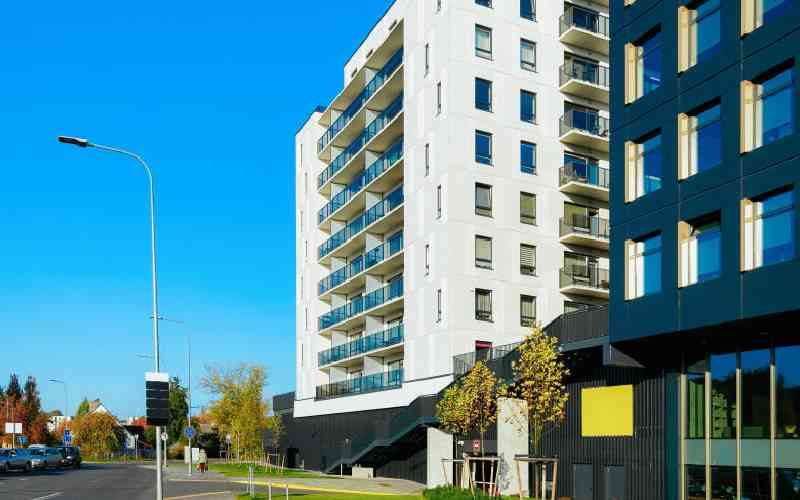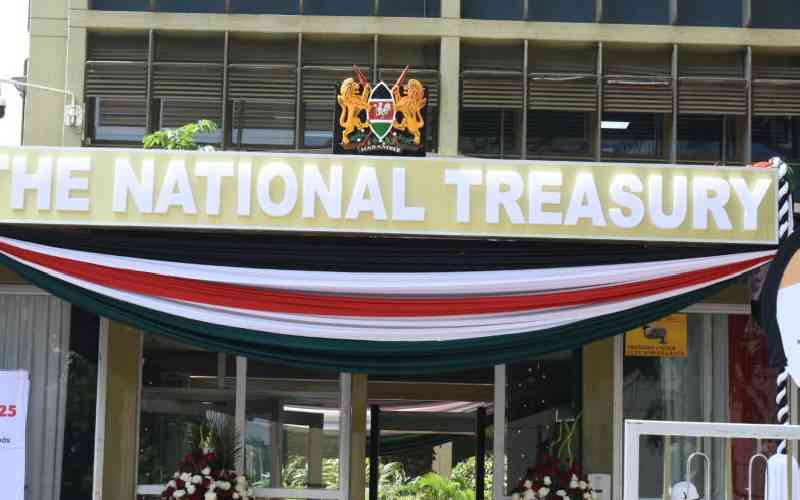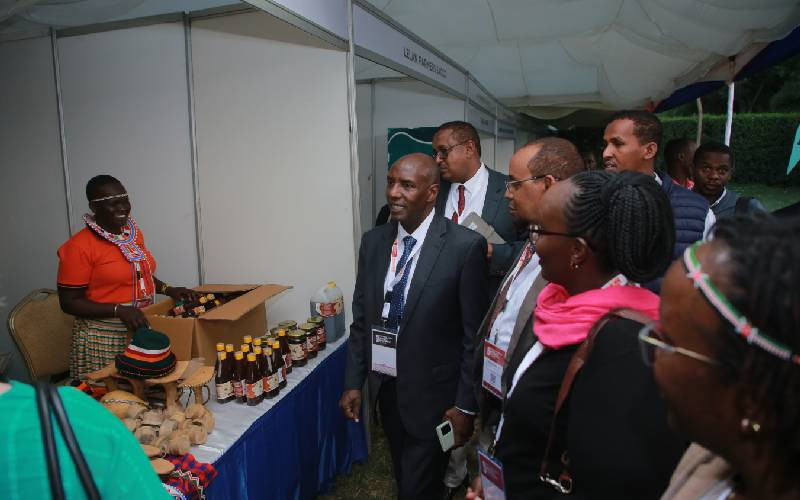
Depressed demand for detached and semi-detached units has made banks wary of lending to the real estate sector. This is after a new report showed reduced construction in the one year ended April 2024.
The Kenya Financial Sector Stability Report 2023 by the Central Bank of Kenya (CBK) lists real estate as one of the sectors behind credit growth in 2023, where demand in the private sector recorded an annual growth of 13.9 per cent.
Finance and insurance tops the list followed by manufacturing, real estate sector, and trade. “These four sectors accounted for 47.7 per cent of the total private sector credit in 2023,” the report says.
The report released in September 2024 also listed subdued demand for commercial spaces and offices as the other reason banks are shying away from the sector.
This has been linked to changing working patterns where some firms which had a work-from-home policy during the Covid-19 period adopting it going forward.
Online shopping possibly by the same population working from home which is reducing the footprint in malls and retail stores has also made the demand for commercial spaces subdued.
Reduced earnings due to the challenging economic times have made households prefer apartments to detached and semi-detached, which cost more due to the privacy and space offerings they come with.
Landlords' reluctance to increase rent prices, according to the report, due to the prevailing economic times, has not brought relief to the sector. This is even as the report notes reduced uptake of new property including for rental purposes.
The report details that the real estate sector remained subdued for two consecutive years to 2024, partly reflecting low demand for commercial and residential units as some organizations moved to virtual offices.
The situation, says the regulator, has been compounded by rising interest rates which has made mortgages more expensive. “The sales, purchases, rental, and occupancy rates of residential, office, retail, and hospitality, slowed in 2023 and in the first half of 2024 compared to 2022 due to a decline in demand and increasing shift from office to working from home and selling online,” the report says.
“Despite slowing rental prices, the shift from shops and malls to online and from office to online and homes, continued in 2023 and 2024, reducing footfall in the domestic chain stores and demand for office space.”
The report reveals that the slow growth in income among Kenyans may partially be the reason behind households renting more apartments than detached and semi-detached.
It highlights the reduced uptake of new property, saying it has made it difficult for developers to sell their units, contributing to an increase in credit risk in the real estate sector.
As a result of the slow uptake of units, developers are also slowing down with the report indicating that building and construction also faced subdued demand in 2023 and the first half of 2024.
This sub-sector decelerated to 3.0 per cent in 2023 from 4.1 per cent in 2022. “And further decline is projected in 2024,” the report says. “The slow recovery in real estate is attributed to the adverse effects of the Covid-19 pandemic as well as other new local and global risks.”
According to the report, the construction price index increased from 4.16 points in December 2022 to 7.1 points in December 2023, due to the increase in the cost of fuel, BRC mesh, steel reinforcement, and cement.
This is because the supply of new units was tilted towards apartments but with less supply of commercial space, office space, detached and semi-detached and detached houses during the period.
“The low demand for commercial, detached, and semi-detached houses is reducing the ability of the real estate and construction sectors to repay their loans. As a result, lenders slowed financing construction projects to mitigate underlying risks,” the report says.
According to the report, the percentage of real estate in total credit to the private sector stood at 9.6 as of April 2024. Private households had the highest at 26.7 per cent with the least being mining and quarrying 0.7 per cent.
“Growth in non-performing loans (NPLs) was mainly driven by mining and quarrying, financial services, tourism, restaurant and hotels, manufacturing and real estate sectors,” the report says.
The report detailed the May 2024 stress test that assessed the impact of credit, interest rate, and liquidity risks on the banking sector in the year looking at moderate and severe scenarios.
The test assumes that the economy will grow by five per cent in the year, which is below the baseline forecast of 5.7 per cent, a Central Bank Rate tightening by one percentage point, a slowdown in lending due to interest and implementation of Treasury Single Account and reduction of CBK’s balances due to commercial banks to 10-year average by December 2024.
If these assumptions hold, the report projects that gross loans will stand at Sh4.2 trillion under a severe scenario against a projected baseline of Sh4.4 trillion.
“Key sectors projected to drive growth in gross loans under alternative scenarios are manufacturing, transport and communication, and trade. These sectors are more exposed to fiscal consolidation, taxation, and reduced household and corporate demand due to a decline in disposable income. The slowest growth in lending is projected in building and construction, and real estate sectors,” the report notes.
It adds that gross NPLs are projected at Sh840.3 billion under a severe scenario against a baseline projection of Sh718.4 billion in December 2024.
“The actual gross NPLs was sh651.8 billion in December 2023 and Sh657.6 billion in June 2024. The sectors projected to drive NPLs under severe scenarios are trade, real estate, transport and communications, and manufacturing,” the report states.
 The Standard Group Plc is a multi-media organization with investments in media platforms spanning newspaper print
operations, television, radio broadcasting, digital and online services. The Standard Group is recognized as a
leading multi-media house in Kenya with a key influence in matters of national and international interest.
The Standard Group Plc is a multi-media organization with investments in media platforms spanning newspaper print
operations, television, radio broadcasting, digital and online services. The Standard Group is recognized as a
leading multi-media house in Kenya with a key influence in matters of national and international interest.











